As the title of the post suggest, today I'd like to show you something new, you may have never seen before. It was new to me, but I hope it's not the only time I see this style. The truth is, there's always something interesting and new at every exhibition, but not all styles are memorable. Ok, let's see what I saw in December, at the last exhibition I visited.
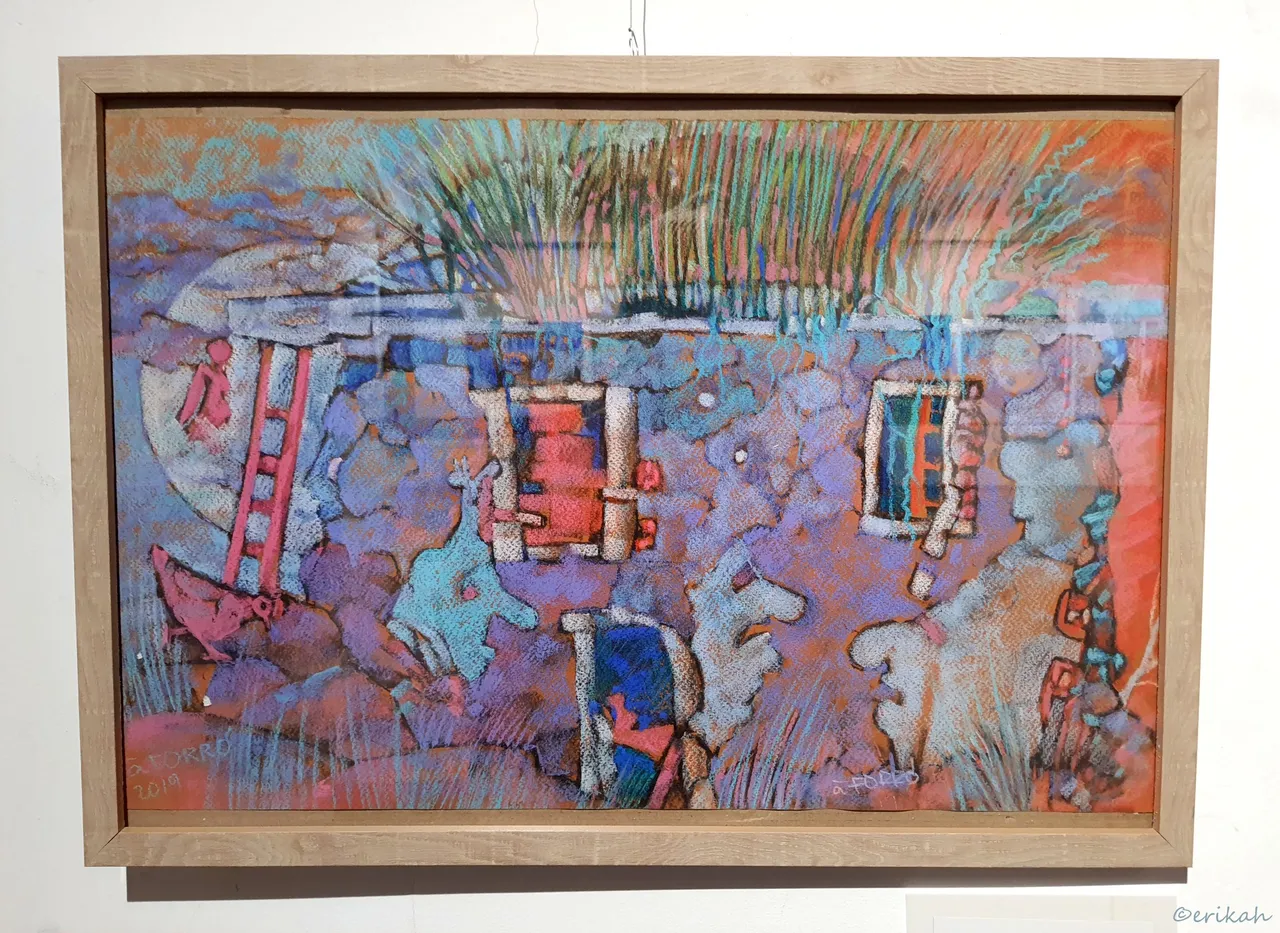
Ágnes Forró - Faces On The Wall
This was an interesting painting, both as the composition and colors. I think it ties your attention down for a good few minutes, if you want to have a proper look at it. The idea and the execution are both brilliant in my eyes. In the worlds of art, the glory goes to those who can bring something new, something extraordinary and this painting fits the description.
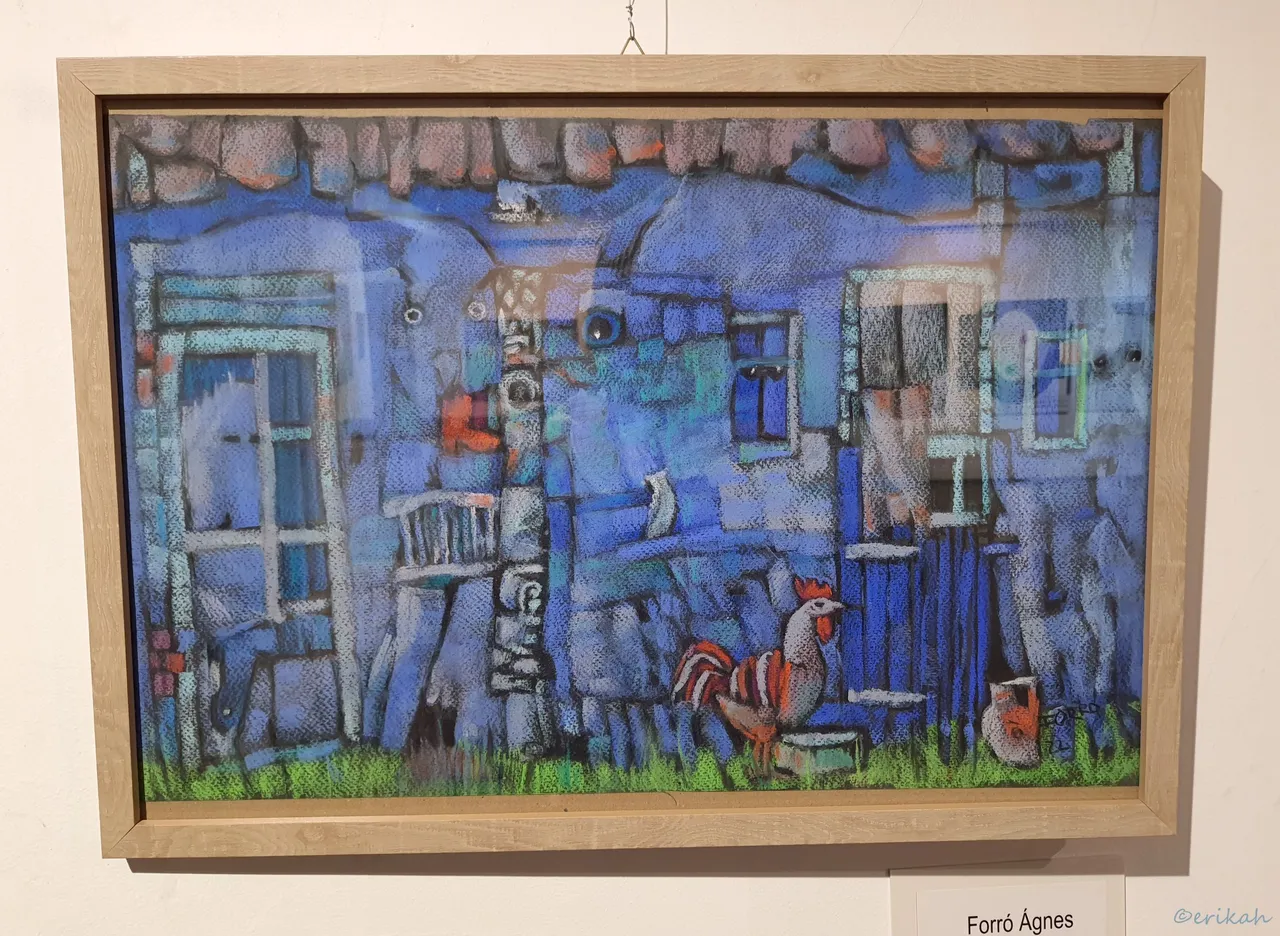
Ágnes Forró - Two Gates and Two Roosters
It's a very particular style, that I like a lot. What stands out in my eyes, besides the painting is the texture of the paper. Or was it canvas? I can't remember exactly, but I love it. It's a simple village scene, but that blue the artist has chosen is perfect.
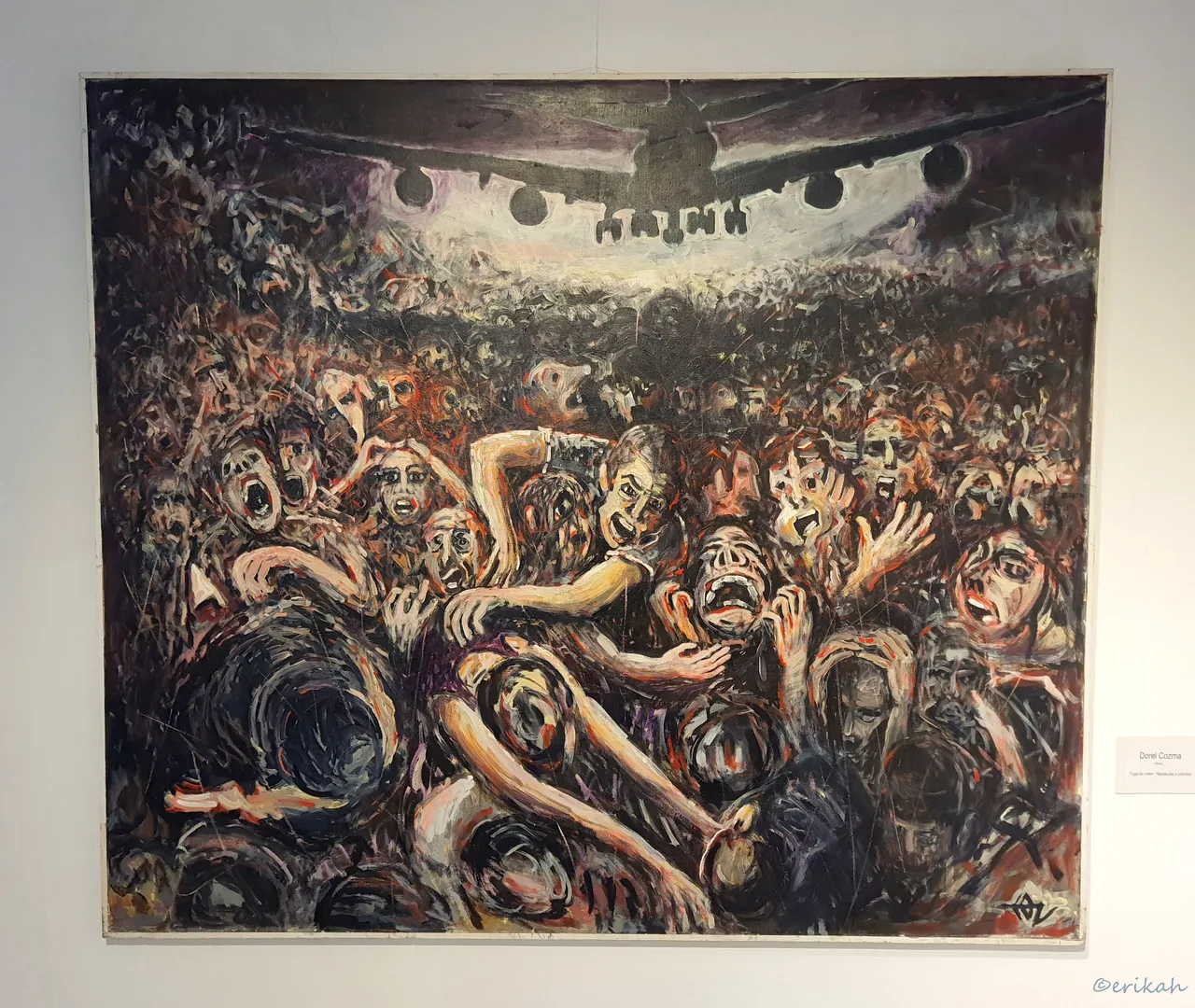
Dorel Cozma - Escape From Hell
As dramatic as this scene is, as brilliant the painting. It hurts you just to think what those people went through, trying to escape and the artist painted a real picture of the scene, literally. Look at the horror on their faces.
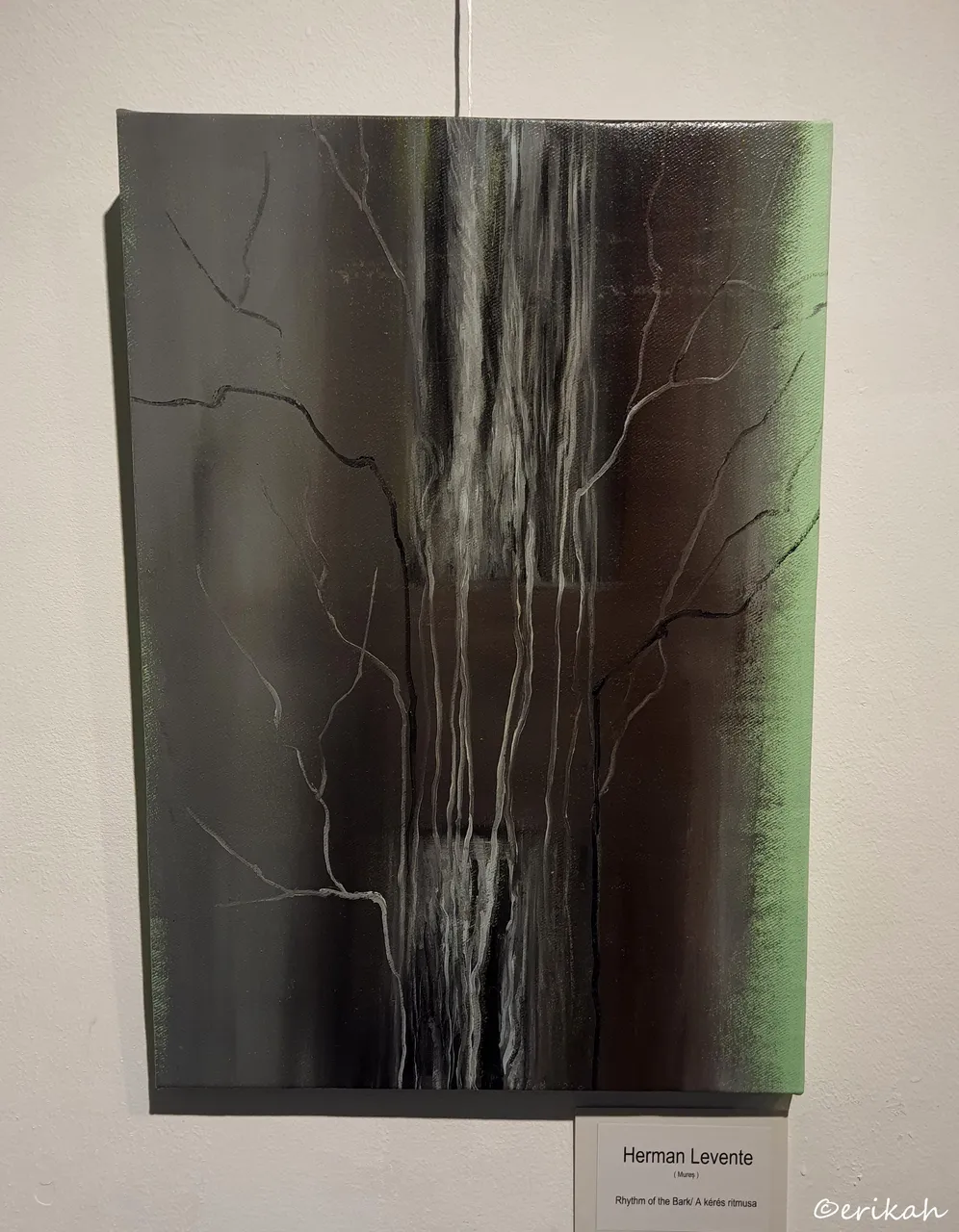
Levente Herman - The Rhythm of Request

Here you can see how big some of the paintings are, specially Escape From Hell.
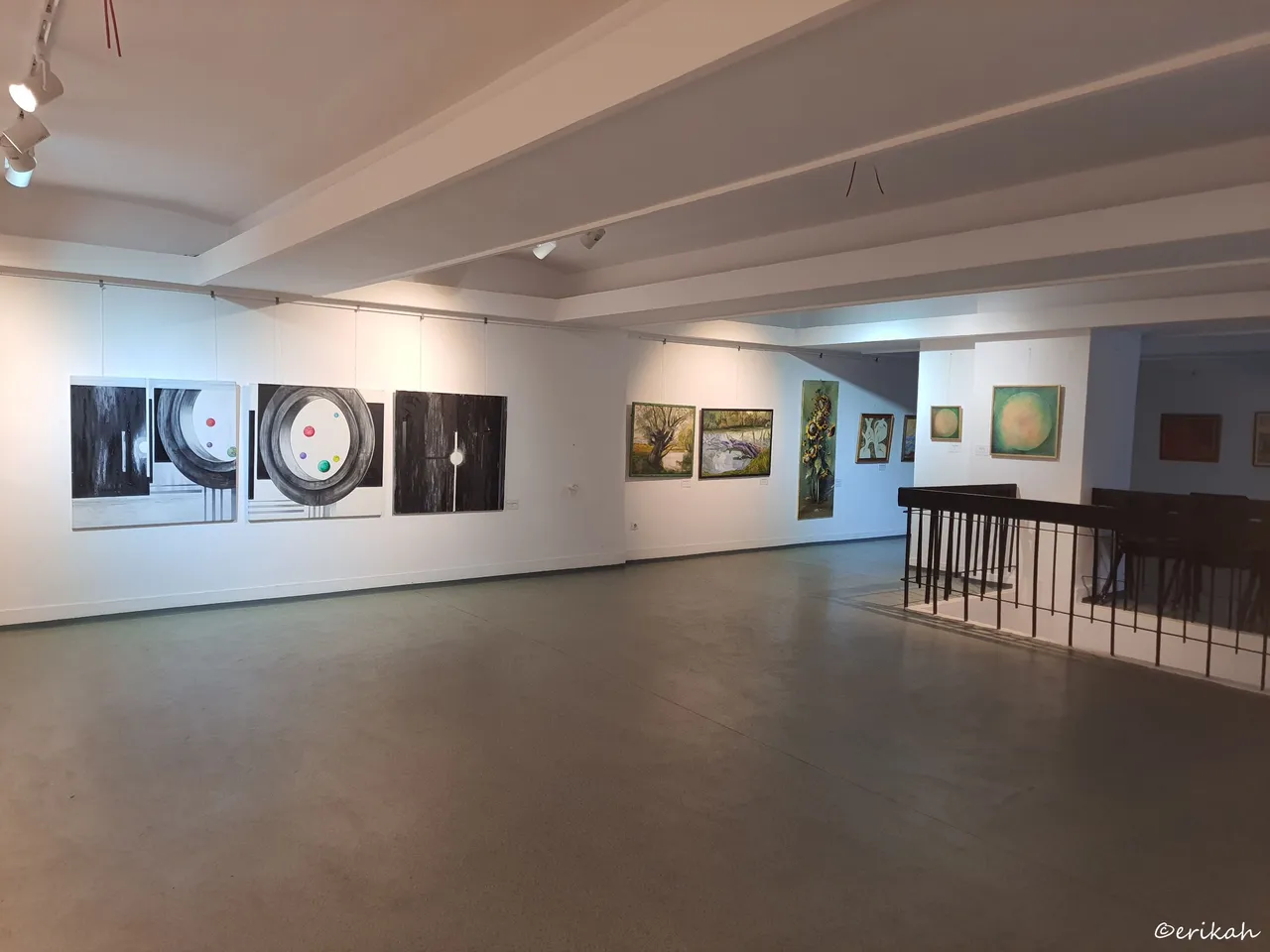
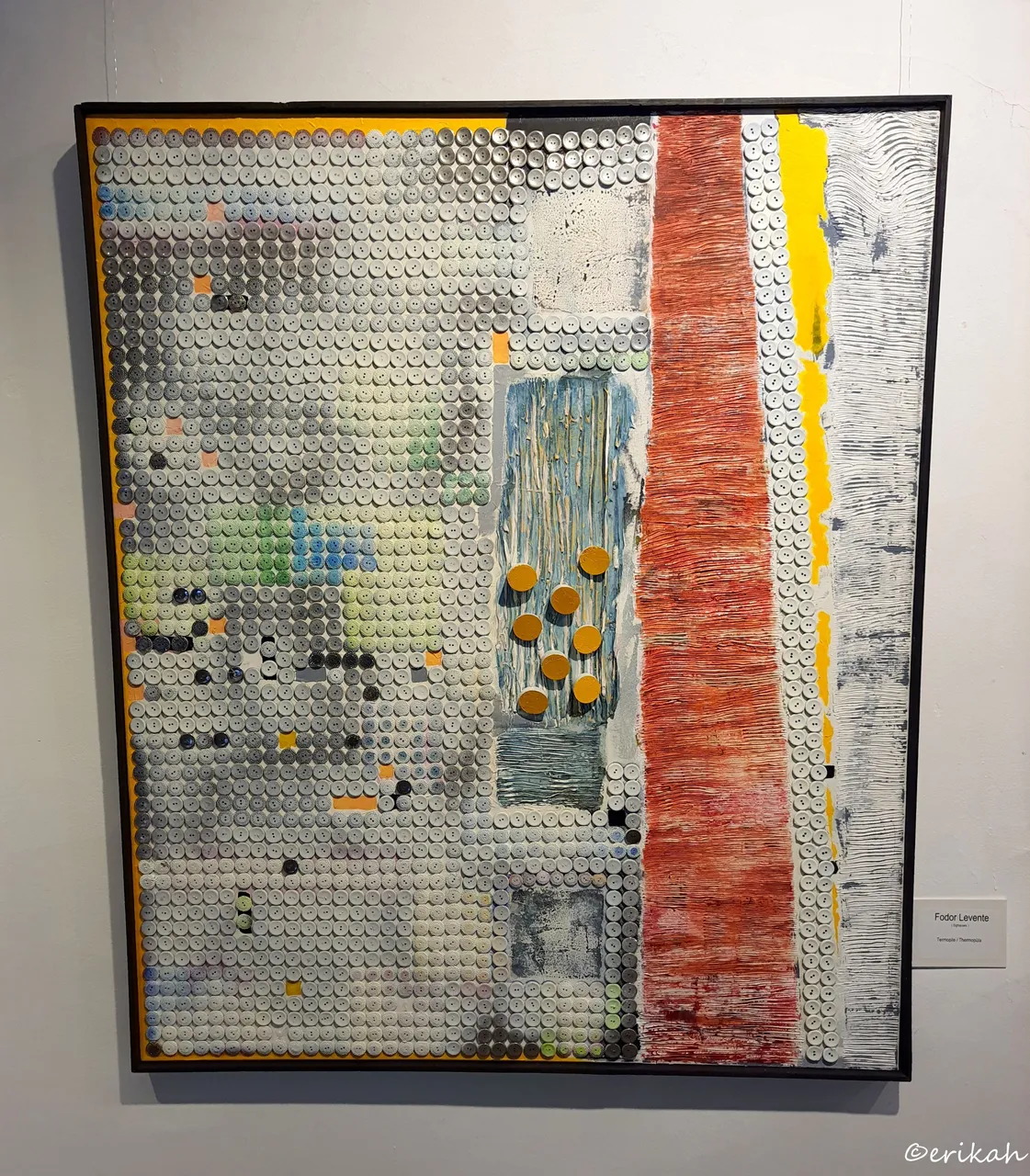
Levente Fodor - Thermopylae
Before I tell you the deep meaning of the artwork, let's have a look at the details.
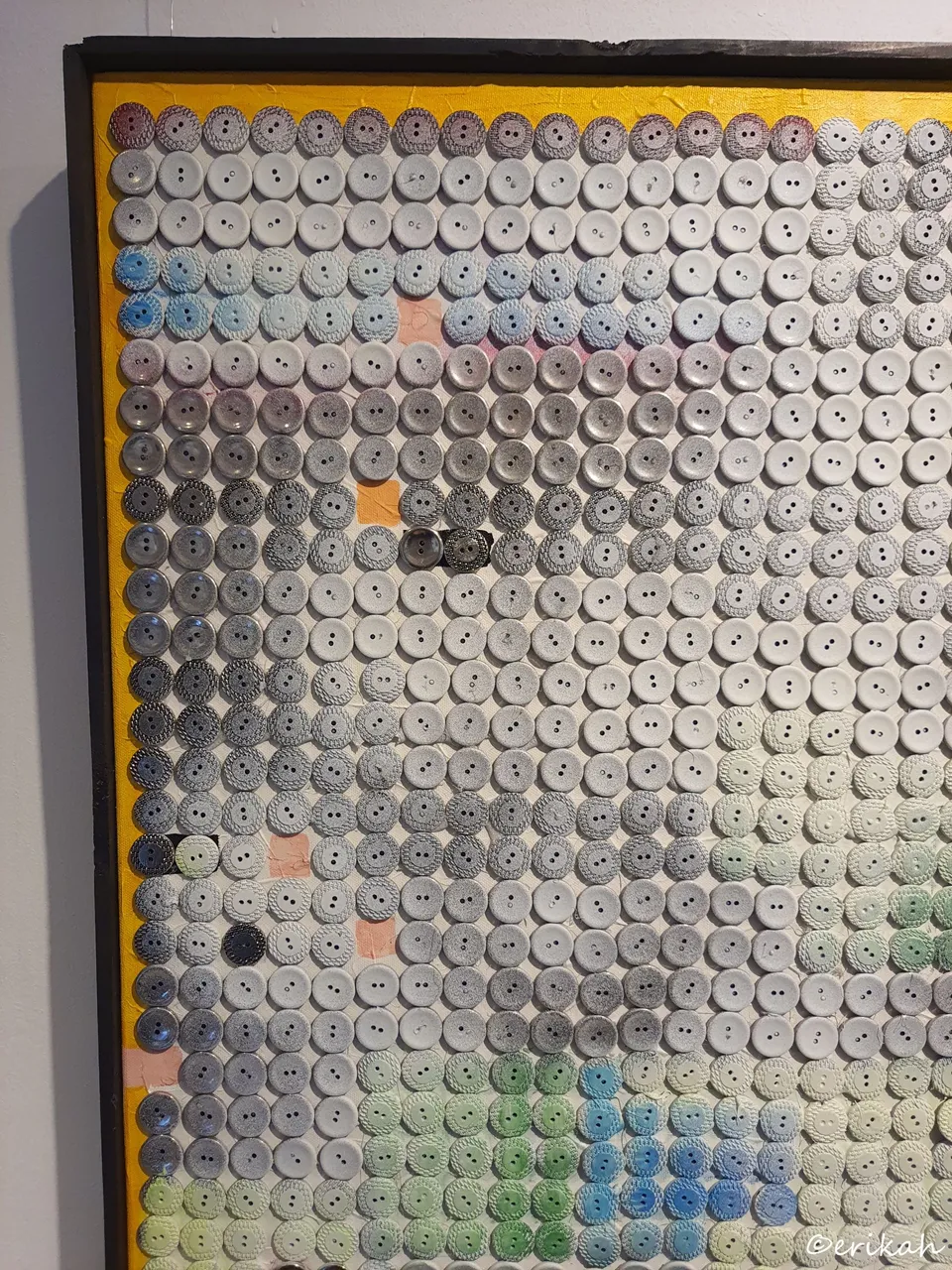
I took a partial photo for you to see what the artwork is made of. These are buttons of the same size, painted in different colors.
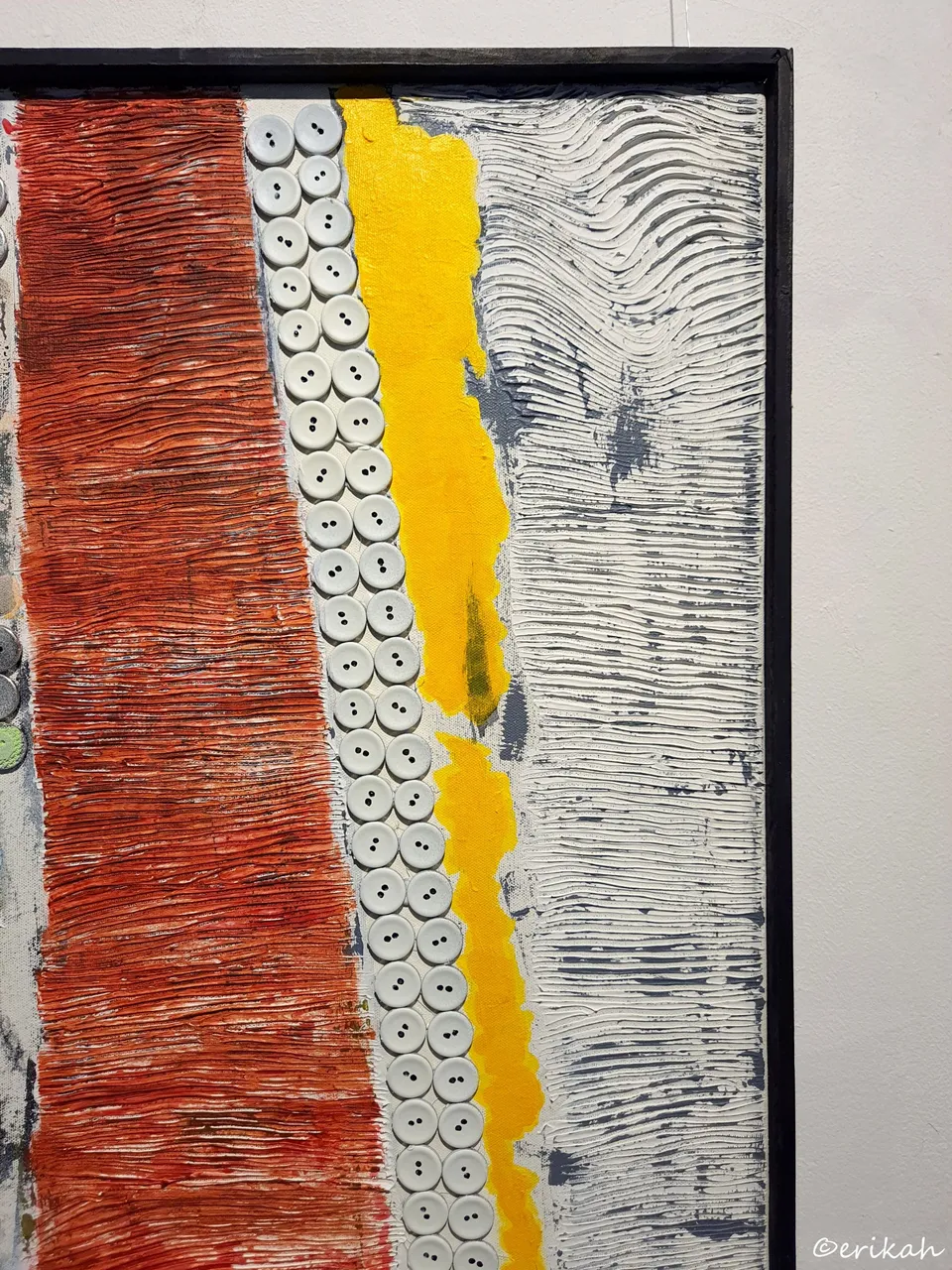
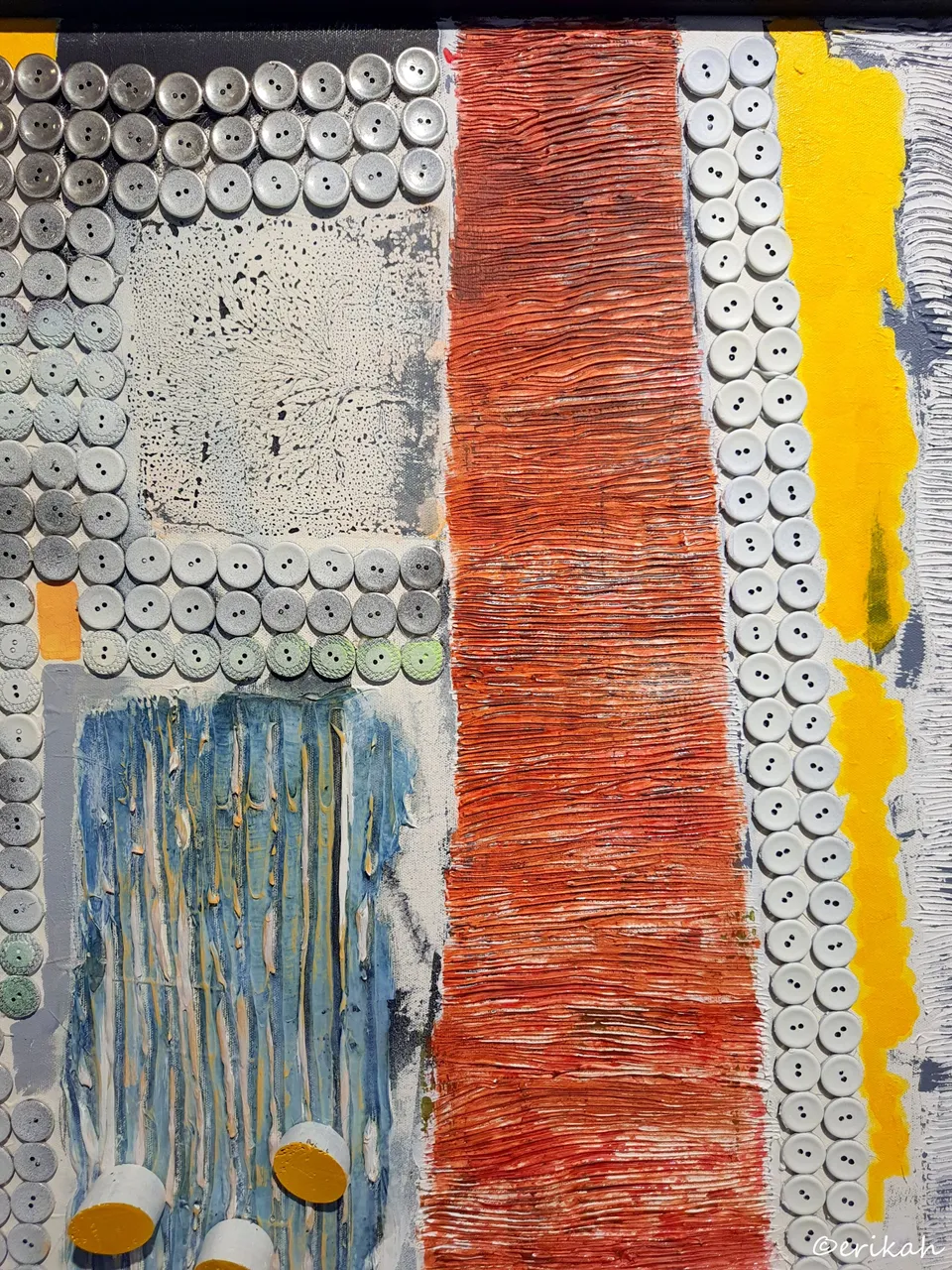
Now let's see what Thermopylae means.
The Battle of Thermopylae was fought in 480 BC between the Achaemenid Persian Empire under Xerxes I and an alliance of Greek city-states led by Sparta under Leonidas I. Lasting over the course of three days, it was one of the most prominent battles of both the second Persian invasion of Greece and the wider Greco-Persian Wars.
Around the start of the invasion, a Greek force of approximately 7,000 men led by Leonidas marched north to block the pass of Thermopylae. Ancient authors vastly inflated the size of the Persian army, with estimates in the millions, but modern scholars estimate it at between 120,000 and 300,000 soldiers. They arrived at Thermopylae by late August or early September; the outnumbered Greeks held them off for seven days (including three of direct battle) before their rear-guard was annihilated in one of history's most famous last stands. During two full days of battle, the Greeks blocked the only road by which the massive Persian army could traverse the narrow pass. After the second day, a local resident named Ephialtes revealed to the Persians the existence of a path leading behind the Greek lines. Subsequently, Leonidas, aware that his force was being outflanked by the Persians, dismissed the bulk of the Greek army and remained to guard their retreat along with 300 Spartans and 700 Thespians. It has been reported that others also remained, including up to 900 helots and 400 Thebans. With the exception of the Thebans, most of whom reportedly surrendered, the Greeks fought the Persians to the death. source
Knowing the story behind the artwork, scroll back and look at it again, this time try to imagine what those buttons represent. I'd say it's a brilliant representation of the historical story. It's always fascinating to see historical and biblical stories on canvas and each time you get something very different, even if it's the same story. That's the beauty of art. Each artist has their own vision and interpretation style.
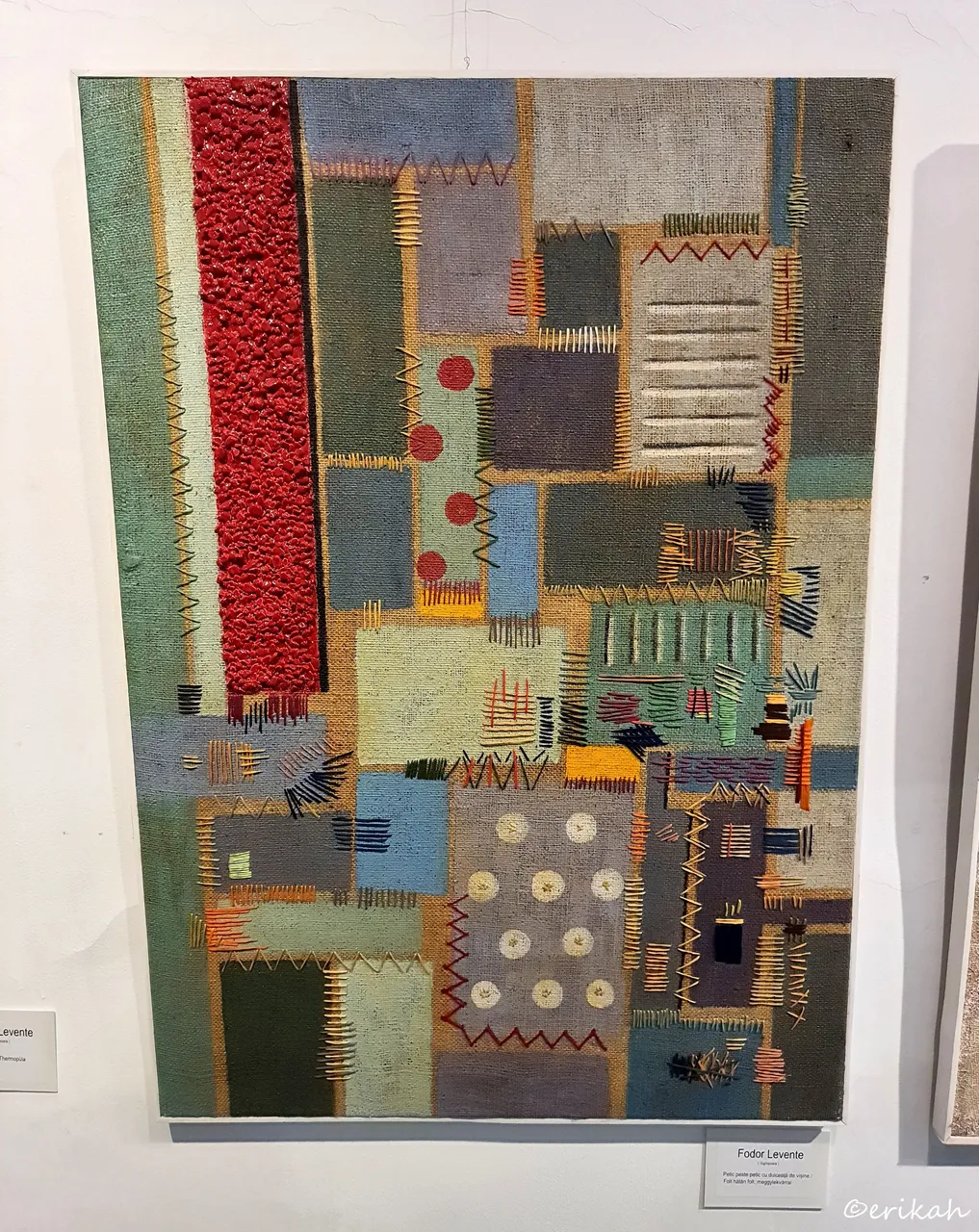
Levente Fodor - Patch on Patch with Cherry Syrup
The title of the artwork is quite funny, but I think it meant to be funny. At first glance it looks like patchwork, and it is symbolizing patchwork indeed, but it's a painting, with some stitches added, to look like patchwork. I can really appreciate this kind of art and love this.

Levente Fodor - After A Night On The Beach
If you thought the fun is over, look at the artwork above. I can only guess, but I think those white spots represent the stones or the shells you can collect on certain beaches. The color of the canvas is fascinating in my eyes. I really admire the creativity of the artist. He had 3 works hung one next to each other, all three absolutely amazing.

After visiting the whole exhibition, I went back and took a photo of all three artworks belonging to Levente Fodor as I think these three are the most interesting. For me at least they are. Out of the box thinking for sure.
As I mentioned before, this is one of my favorite galleries because the artworks you see here always exceed your expectations. I go in without any expectations as most of the times I have no idea what exhibition I'm going to see, or who's the artist and always have part of a big surprise, in a good sense of the word.
Lately I've been thinking about how many artists are using historical and biblical topics and themes and how amazing all of those artworks turn out. It requires a lot of imagination and talent to depict something you can only read about though.

If you're a newbie, you may want to check out these guides:
- Communities Explained - Newbie Guide
- Cross Posting And Reposting Explained, Using PeakD
- Hive Is Not For Me
- How To Pump Your Reputation Fast - Newbie Guide
- Tips And Tricks & Useful Hive Tools For Newbies
- More Useful Tools On Hive - Newbie Guide
- Community List And Why It Is Important To Post In The Right Community
- Witnesses And Proposals Explained - Newbie Guide
- To Stake, Or Not To Stake - Newbie Guide
- Tags And Tagging - Newbie Guide
- Newbie Expectations And Reality
- About Dust Vote And Hive Reward Pool, by @ libertycrypto27
